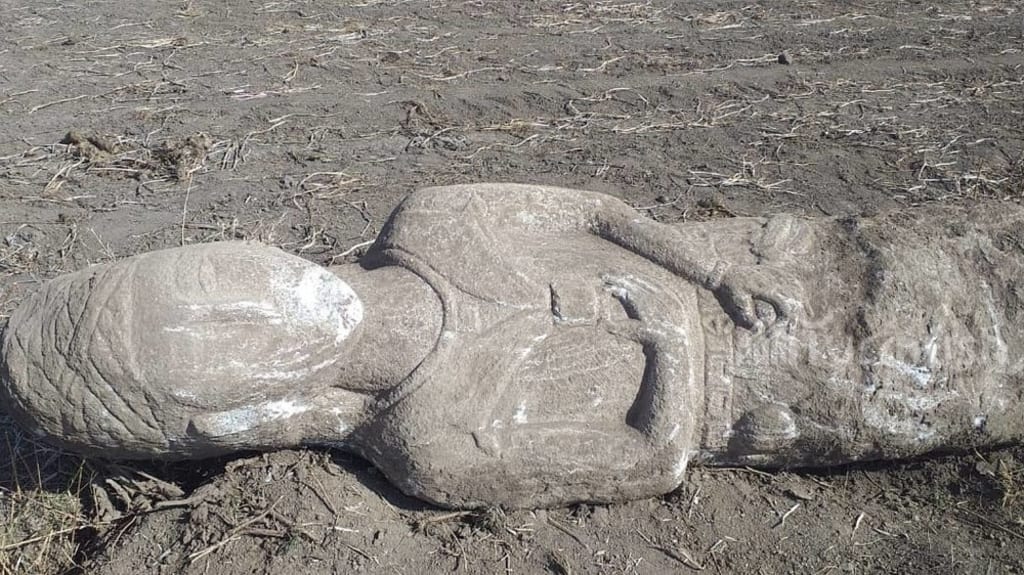Kyrgyz Farmer's Luck
A rare archeological find tracing to ancient Turkic cultures

I come from one of the most beautiful places on earth: a mountainous country of Kyrgyzstan, which used to be a part of the Soviet Union. It is located in Central Asia. Its mountain range north of Himalayas makes up about 93% of the country's land and is a part of the Tien-Shen system with the highest peak amply called Victory Peak measured at 7349 meters (24.4K feet) sitting close to the border with China.
The country is a part of the ancient Silk Road from China to Europe, sitting at the crossroads of trade routes between Asia, Europe, and Middle East. In the south, it houses the ancient Ferghana Valley, one of the most well-known places that grows everything. Alexander the Great is famed to have rested and healed his exhausted troops that got lost in Ferghana on the way to conqure the entire known world, probably after making a wrong turn away from Persia. They didn't have GPS at the time and the locals, who didn't know ancient Greek, didn't want to help them. So Alexander found the relic walnut forests in the south of Kyrgyzstan and camped there, foraging walnuts and fruits growing in abundance there. in Russian, walnuts are literally called "Greek nuts," giving legs to this myth. After the full recovery, Alexander continued his conquering quests all the way to modern-day Pakistan and later died in Babylon of mysterious causes.
In the north of Kyrgyzstan, there is a beautiful lake that it called Issyk-Kul, meaning "a warm lake" in Kyrgyz, because it never freezes. It is one of the most pristine places in the world, whose deep waters are feeding off the Tien-Shen glaciers and thousands of mountain springs and rivers. There's only one river flowing out of it. Many ancient travelers on the Silk Road connecting East to West stumbled upon the lake and were struck by its peaceful beauty and majestic surroundings of the high mountains. Even though there are only several passages to the lake through the high mountains that surround it on all sides, there is a lot of evidence that the areas around the lake were inhabited or visited long before humans learned to record their history. For example, there are numerous petroglyph sites around the lake that are 4-5 thousand years old. The city of Cholpon-Ata maintains an open-air museum of petroglyphs that depict the Marco Polo ship and other animals the ancient inhabitants of the lands around the lake hunted.

Many ancient nomadic Turkic tribes roaming the area around the Issyk-Kul Lake marked burial mounds of their leaders and fallen warriors with stone statues (called "balbal") dug deep into the ground in a chain leading to the mound. Some burial mounds found around Issyk-Kul date back to the 3rd century BC, but there also mounds that are more "modern," dating to 9th century AD. Beyond marking the way to the mound, balbals installed by the Turkic tribes could also serve other purposes: some balbals have carvings of the names of the enemy's warriors killed in battle, some could symbolize the souls of the killed enemy gifted to the leader, and others - the killed leaders of the enemy tribes that were installed at the beginning of the balbal chain.
The balbal found on October 15, 2022 is quite unusual. First, it was found by a farmer who was preparing the land to plant potatoes in the spring and stumbled upon something with his plow. When the farmer started to dig, he realized it was something bigger than he could handle on his own. He had to call in an excavator that damaged the statue's front when digging it out, which made it harder to determine its facial features.
Second, at 2.70 meters (8.85 ft), this balbal is bigger than most other found sculptures that usually vary between 1 to 3 meters. The lower part of the statue that was below the ground is rougher and is not as polished as the top. Third, it has a big necklace, which might suggest that it is a carving of a woman, which are a lot rarer than balbals of men. If it is a woman's balbal, it's most probably one of a prominent tribal woman (in Turkic cultures, women played an important role and some could be famed warriors or tribal leaders). The balbal's turban is also reminiscent of a mature woman's headdress. Another distinctive feature of the balbal is that it holds a dagger called akinak.
While the historians have a lot of work to do in terms of determining the exact "age" of the balbal and reading its markings, it is undoubtedly a rare archeological find that can give us more information about the tribes that passed through or lived around Issyk-Kul in bygone eras.

About the Creator
Lana V Lynx
Avid reader and occasional writer of satire and short fiction. For my own sanity and security, I write under a pen name. My books: Moscow Calling - 2017 and President & Psychiatrist






Comments
There are no comments for this story
Be the first to respond and start the conversation.